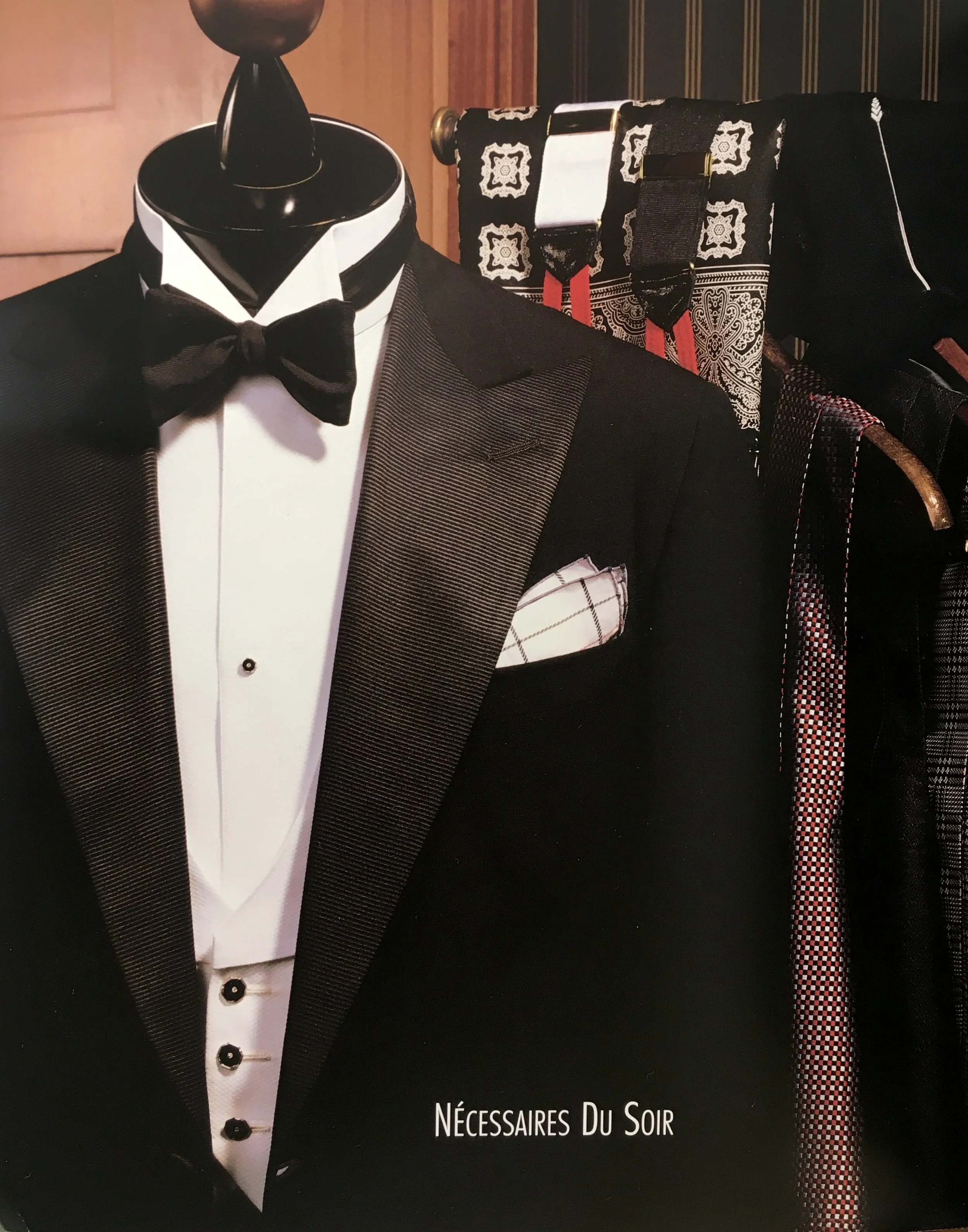FORMALWEAR
The ultimate sartorial embodiment of the “less is more” maxim. Eveningwear for men reached its perfected form in the 1930s, when the classically refined formal white tie and tailcoat coexisted with the modern semi-formal black tie tuxedo. While occasions for the former are now vanishingly few, the latter will always hold a place in the wardrobes of men who, from time to time, wish to look their debonair best.
The Tuxedo
While the aesthetic effect of the basic tuxedo is the soul of simplicity, its proper details are exacting: a single or double-breasted jacket in black or midnight wool (perhaps with a bit of mohair), cut with peak or shawl lapels trimmed in silk grosgrain or smooth satin, over matching trousers with a similarly trimmed single stripe down each leg. Popping against this dark field is a crisp white french cuff shirt, with fine pique or soft pleats down the front, topped with a classic turn-down or wing collar displaying a hand-tied black or midnight bow. Finishing off the ensemble is either a waistcoat or cummerbund to cover and smooth the waistline, and black patent or polished calf shoes. Formalwear also marks a rare opportunity for mens jewelry in the form of shirt studs, cufflinks, and even a pocketwatch chain.
Advanced Style
Once these rudiments are mastered, the adventurous may wish to inject more individualized elements of cloth, color, and pattern into the mix. The most well-established variation on the tuxedo theme is a separate dinner jacket. A white or ivory model is a perennial warm-weather favorite, while plush renderings in velvet, tartan, or corduroy conjure the cozy elegance of Victorian smoking jackets and are complemented by velvet slippers. The key to experimentation is to respect the basic architecture of the eveningwear ensemble.



